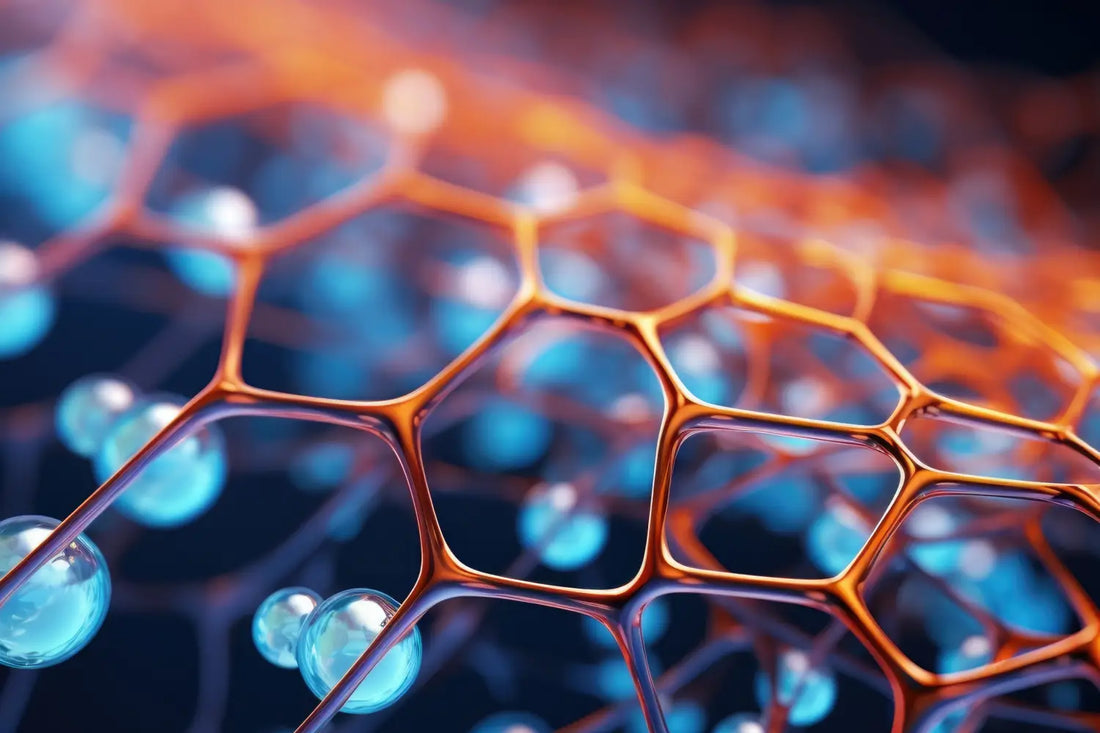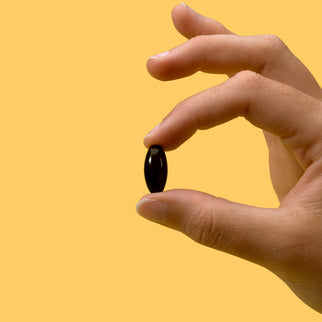Do you ever wonder what makes up the cells in your body, or how nutrients move in and out of cells? The answer lies within a very special class of molecules known as phospholipids. These microscopic wonders serve as building blocks for cell membranes, gatekeepers of cellular activities, and even contribute to brain and heart health.
In this article, we'll delve into what phospholipids are, how they differ from other fats, and why they are a vital part of biological processes.
What Are Phospholipids?
A phospholipid molecule is a lipid with a phosphate group attached to it. Structurally, phospholipids are polar lipids composed of fatty acids, a glycerol backbone, a phosphate group, and a specific head group. They belong to a class of lipids that play crucial roles in various processes of molecular biology, coming in different types like phosphatidylcholine and phosphatidylserine.
A typical phospholipid molecule consists of two fatty acid tails attached to a glycerol backbone, and a phosphate group and a polar head group are then bound to the glycerol. The "head" is hydrophilic, meaning it is attracted to water, while the "tails" are hydrophobic, repelling water. This unique arrangement is what allows phospholipids to form the protective barriers around cells.
As polar lipids, phospholipids serve as the primary component of cell membranes in animal cells, including eukaryotic cells that make up tissues and organs. They are also found in organelles within the cells, such as the endoplasmic reticulum and mitochondria, helping to form the barrier that separates these structures from the cytoplasm.
How Are Phospholipids Different from Other Lipids?
While other lipids, such as triglycerides and cholesterol, may have similarities with phospholipids, they differ significantly in structure. For instance, triglycerides consist of three fatty acid tails attached to a glycerol backbone, but lack the phosphate group and head found in phospholipids. Cholesterol molecules are entirely different, consisting of complex rings and lacking the fatty acid tails and glycerol backbone altogether.
These structural differences lead to unique functions in phospholipids. They are amphipathic molecules, meaning they have both hydrophobic and hydrophilic properties. This dual nature allows phospholipids to act as emulsifiers, helping to mix water and oil in biological systems. It also enables them to form the lipid bilayer in cell membranes, providing a semi-permeable barrier that controls the flow of substances in and out of cells.
Their amphiphilic characteristic enables them to spontaneously form vesicles or micelles in aqueous environments, further serving as carriers for nutrients, enzymes, and other essential biological molecules.
What Role Do Phospholipids Play in Cell Membranes?
Imagine the cell as a bustling city and the plasma membrane as its fortified walls. Phospholipids, as crucial lipid molecules, are the bricks within these walls. In biological terms, they are the major component of cellular membranes, creating a protective and functional boundary for each cell. This layered structure is commonly referred to as the lipid bilayer, and it's crucial for maintaining the internal environment of a cell.
The phospholipid bilayer is a marvel of molecular architecture. Each phospholipid molecule is aligned so that its hydrophilic head (water-loving) faces outward while the hydrophobic tails (water-repellent) are tucked inside. This orientation allows the bilayer to exist in an aqueous solution, forming a barrier that separates the inside of the cell from the outside world.
Permeability is a key term when it comes to membrane function — the phospholipids' unique structure allows certain water molecules and ions to pass through, depending on their concentrations, while keeping out potentially harmful substances. In essence, phospholipids contribute to the cell membrane fluidity and integrity, facilitating controlled substance exchange and cellular communication.
How Do Phospholipids Facilitate Cellular Communication?
In addition to forming the physical barriers of cell membranes, phospholipids also serve as a platform for intricate cellular communication systems.
Have you ever wondered how cells “talk” to each other or respond to external stimuli? The secret often lies within lipid rafts — specialized microdomains within the phospholipid bilayer that contain high concentrations of cholesterol and sphingolipids.
These lipid rafts serve as organizing centers for the assembly of signaling molecules, playing a pivotal role in the initiation of various cellular processes. When a hormone or neurotransmitter binds to a receptor embedded in the membrane, intracellular events are triggered. These events could result in anything from the cell “deciding” to divide, to the internalization of nutrients or even the firing of a neuron in the brain.
One essential signaling pathway is the phosphoinositide signaling system. In this pathway, phospholipids in the membrane are cleaved by enzymes to produce secondary messengers like inositol trisphosphate (IP3) and diacylglycerol (DAG). These molecules subsequently activate other enzymes and ion channels, thereby affecting cellular responses such as gene expression, cell growth, and neurotransmission.
Moreover, some phospholipids contain fatty acids that can act as bioactive lipids.
How Do Phospholipids Contribute to Brain Health?
Phospholipids are not just confined to peripheral cells; they also have a significant presence in brain tissues. Omega-3-bound phosphatidylserine, for example, is a type of phospholipid that is essential for the function of receptors in the brain.
These tiny molecules play a major role in mental health, too. They are essential for the activities of enzymes and the movement of ions in and out of nerve cells, which are critical functions of phospholipids. They contribute to neural signaling, brain cell maintenance, and overall cognitive function, making them crucial for overall cognitive health.
Why Are Phospholipids Important in Digestion and Absorption?
Phospholipids have a water-loving head and a fat-loving tail, allowing them to act as effective emulsifiers that break down large fat globules into smaller, more manageable liposomes for easy digestion and absorption. Phospholipids facilitate the digestion and absorption of fats, proteins, and carbohydrates.
How Do Phospholipids Impact Heart Health?
Lipoproteins, which are vital for transporting fats and cholesterol through the bloodstream, contain phospholipids. These molecules help to maintain the structural integrity of lipoproteins.
Additionally, the unsaturated fatty acids in phospholipids may contribute to heart health. The level of saturation in these fatty acids can affect the fluidity and function of cell membranes, including those in the cardiovascular system.
Can Phospholipids Be Obtained Through Diet?
For those looking to increase their phospholipid intake, diet is a great starting point. Foods like eggs, soybeans, and fish are rich sources of lecithin, a complex fat that includes phosphatidic acid, a form of phospholipid. These can serve as delicious and nutritious ways to bolster your body's phospholipid levels.
However, your body isn't solely reliant on diet for phospholipid needs — a process of synthesis occurs within the endoplasmic reticulum of cells, where phospholipids are created from simpler molecules. In other words, your body can manufacture these compounds independently, but dietary intake can serve as a valuable supplement.
What Are the Health Benefits of Phospholipid Supplements?
Supplements like phosphatidylserine and phosphatidylcholine are easily accessible options — these belong to a broader class of glycerophospholipids, which also includes phosphatidylethanolamine and phosphatidylinositol.
Some research highlights the potential of these supplements for supporting cellular health. For instance, phospholipids are essential for the integrity of mitochondria and biological membranes. When present in an aqueous solution (like blood), they can support cellular function and overall health.
Are There Any Risks or Side Effects?
While phospholipids are generally safe, there are some things to keep in mind, as with any supplement. The fatty acid chains in these molecules can be nonpolar, meaning they may interfere with other membrane proteins and cellular functions if consumed in excessive amounts.
Also, like any supplement, it's important to consider how it interacts with your body's natural balance; excessive intake could offset the equilibrium of your glycerol molecule levels. For the best advice, consult your doctor about phospholipid supplementation.
The Bottom Line
Phospholipids are more than just complex molecules; they are critical players in maintaining and optimizing human health. From forming the basis of our cellular structure to supporting brain function, aiding in digestion, and potentially benefiting heart health, these biomolecules are true multitaskers. Understanding their roles, sources, and benefits is essential for anyone genuinely invested in their wellness journey.
As you learn more about phospholipids, consider adding iwi life's omega-3 supplements to your health routine. Rich in essential fatty acid-containing phospholipids, these supplements give you a well-rounded approach to health and well-being.
Sources:
The Crucial Roles of Phospholipids in Aging and Lifespan Regulation | Frontiers
3.5: Lipid Molecules - Phospholipids | Biology LibreTexts
The Lipid Bilayer - Molecular Biology of the Cell | NCBI Bookshelf
26.9: Phospholipids | Chemistry LibreTexts
Lipid Rafts and Signal Transduction | Nature Reviews Molecular Cell Biology
IP3 and DAG Signaling Pathway - Mechanism, Functions, and FAQs | Geeks For Geeks
What Are Emulsifiers and What Are Common Examples Used in Food? | Eufic
Dietary Polar Lipids and Cognitive Development: A Narrative Review | PMC



















